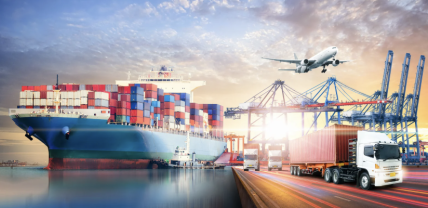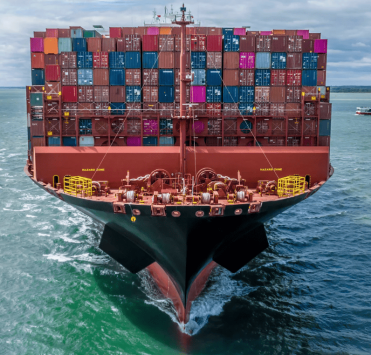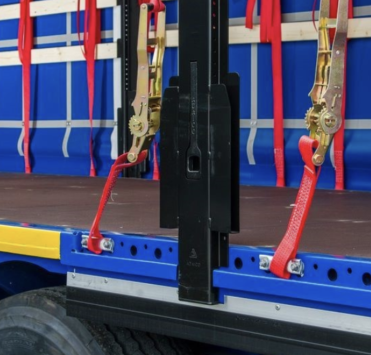Differences between intermodal and multimodal transportation

The difference between intermodal and multimodal transportation
With the rapid development of global trade and the growing need for integrated logistics, intermodal forms of freight delivery are becoming an integral part of a business's transportation strategy. Companies seek to shorten delivery times, reduce costs and minimize risks. In this context, intermodal transportation and multimodal transportation play an important role - two approaches that are actively used in modern logistics, especially in such areas as container transportation and rail transportation.
Understanding the differences between these types of transportation helps businesses make informed choices: which logistics route to choose, what resources to use and who to entrust with delivery. In this article we will look in detail at what distinguishes intermodal transportation from multimodal transportation, in what cases they are used and what advantages each scheme can offer.
Definition and essence of intermodal transportation
Intermodal transportation is a method of cargo delivery, which involves two or more modes of transportation, but the cargo is moved in a single transport module (most often in a container), without transshipment of the contents.
A classic example: cargo is loaded into a sea container, shipped by sea, then by rail, and at the last stage it is delivered by road. The entire journey takes place in one container, which ensures the safety of the cargo, simplifies loading/unloading processes and speeds up the logistics chain.
Key features:
- A single cargo module is used - container, trailer, semi-trailer.
- Each carrier works at a different stage: e.g. port service - by sea, railroad company - by land, road carrier - at the finish line.
- A single contract of carriage is concluded, but the responsibility remains divided between the participants at each stage.
The advantage of such a scheme is unification and economy. Containerization allows to optimize costs and standardize logistics on international routes.
Definition and essence of multimodal transportation
Multimodal transportation is also delivery using several modes of transportation, but the key difference is that the entire route is managed by one operator. He is fully responsible for the cargo along the entire route.
This means that the client does not conclude a contract with each individual carrier, but with one logistics company or freight forwarder, which organizes the entire chain - from point A to point B. This is especially important for cargoes that require strict control of transportation conditions - for example, transportation of dangerous goods, temperature-sensitive goods or urgent delivery.
The main features of multimodal transportation:
- One logistics operator - full support at all stages.
- One transportation document (bill of lading, CMR).
- Centralized route planning and execution control.
- Full responsibility of the operator for the entire logistics process.
This approach is convenient for customers who need end-to-end support without the need to interact with several companies at different stages.
Key differences
Criterion | Intermodal transportation | Multimodal transportation |
Responsibility | Divided between carriers | Fully on one operator |
Documents | Separate waybills for each stage | Single bill of lading or CMR |
Route management | Strictly tied to the types of transport | Flexibly customizable to the client's needs |
Cost | Often lower due to standardization | Higher due to comprehensive service |
Flexibility | Limited by stages | Higher due to centralized management |
Advantages and disadvantages
Intermodal transportation
Advantages:
- Cost-effective through the use of containerized transportation.
- High level of standardization: easy to plan, easy to scale.
- Reliable integration with rail and maritime transportation.
Disadvantages:
- Difficult tracking at junctions between carriers.
- Risks of delays due to coordination between different carriers.
- Responsibility is blurred between several parties.
Multimodal transportation
Advantages:
- Centralized management and single point of contact - easier for the customer.
- Minimization of risks associated with loss of cargo or delay.
- Optimization for individual conditions: route, deadline, terms and conditions.
Disadvantages:
- Higher cost for complex support.
- Dependence on professionalism and experience of one operator.
Examples of use
Intermodal transportation:
- Imports from China: cargo is shipped by sea to the port of Gdansk, Poland, then - rail transportation from Poland to Ukraine, and finally - delivery by truck to the customer's warehouse.
- Export of agricultural products: grain is packed in containers, then: truck → railroad → port → ship.
Multimodal transportation:
- Transportation of dangerous goods: temperature control, safety standards and continuous monitoring are important in chemical logistics. This requires coordinated work under a single operator.
- Express equipment delivery: airfreight + trucking to the end point, all organized by one logistics company under a single contract.
How to choose the type of transportation?
The choice between intermodal and multimodal transportation depends on the specific task, urgency, budget and control requirements:
- Intermodal transportation is suitable for:
- Standard and bulk shipments.
- Shipments that do not require constant monitoring (e.g. construction materials, metal products).
- Destinations with a well-established logistics scheme (e.g. container transportation between major hubs).
- Multimodal transportation is effective for:
- Urgent or valuable products.
- Transportation of dangerous or temperature-sensitive goods.
- Situations when route personalization and high level of service are important.
Conclusion
Intermodal and multimodal transportation are not competitors, but complementary logistics solutions. The first option is optimal for those who strive to reduce costs and work with sustainable routes. The second is for those who value control, flexibility and risk minimization.
Modern realities increasingly require turnkey integration of logistics services, which makes multimodal transportation more and more in demand. This is especially true in conditions of geopolitical instability and the need to quickly adapt to changes.
Companies providing rail transportation, container transportation, sea and road logistics are actively investing in the development of multimodal solutions to offer the client a full range of services with a single window of interaction.
The choice between intermodal and multimodal transportation is a choice between flexibility and cost, between control and versatility. The main thing is to understand the goals and objectives of the business, and to match logistics to them.









